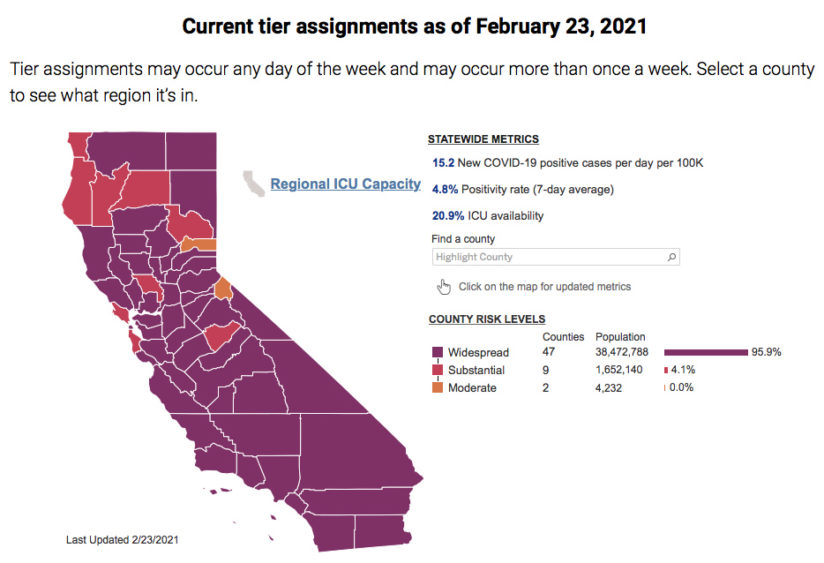Gov. Gavin Newsom shared details about the state’s progress in the fight against Covid-19 during a press briefing held on the first day of March, nearly one year after the pandemic forced lockdowns around the Bay Area.
As he spoke from Elk Grove, millions of newly-approved Johnson & Johnson vaccine doses began their journey to distribution centers around the country, with about 380,000 slated for California, according to the governor.
Monday’s focus was clearly on efforts to get kids back into classrooms “in a safe and healthy way” following the prior day’s news that the governor and state legislators finally reached a deal aimed at encouraging schools to reopen with more of a carrot than stick approach.
The $6.6 billion proposal is a compromise between what Newsom floated in December and the Assembly and Senate bills state legislators agreed to in February. The latest iteration, to be voted on Thursday, drops vaccination and collective bargaining requirements and offers a $2 billion incentive pool for schools that open classes for transitional kindergarten through second grade by the end of March.
The funding also requires that schools offer in-person classes for all at-risk students: English learners, homeless students and others without sufficient access to distance learning technology.
The plan notably applies to school districts in counties still in the state’s purple, or widespread infection, tier. Newsom, however, said it’s “likely” that seven counties will be moved from the purple to less restrictive red tier Tuesday when the state releases its weekly Blueprint for a Safer Economy update.
The latest school plan relies heavily on counties reaching the red tier to further reopen all elementary classes and limited classes in middle and high schools.

While state funding may not be contingent on collective bargaining agreements, school districts and labor unions will still need to strike deals before staff returns to campus facilities. Not all, but much of those negotiations hinge on the topic of vaccine access. To that end, the state is as of Monday setting aside 10 percent of its vaccine supply, approximately 75,000 doses per week, for teachers and school staff. Priority will be given to those who have already returned to work on campus.
In partnership with FEMA, at least two California mass vaccination sites — one at Cal State Los Angeles and the other at the Oakland Coliseum — will dedicate specific days for educator vaccination drives. Those eligible can obtain a unique online code through MyTurn.ca.gov that prioritizes school staff-related appointments.
Despite the push to vaccinate teachers and staff, Newsom stood by his assertion that vaccine access is not a prerequisite for reopening schools, an opinion he said is informed by Dr. Anthony Fauci and the U.S. Centers for Disease Control and Prevention.
The proposal’s remaining $4.6 billion will be used to “reimagine the school year,” which could include extension of the calendar school year and myriad of measures meant to help students regain some of what they’ve lost in a year-long struggle with distance learning.
Assembly Speaker Anthony Rendon, who joined Newsom in Elk Grove, said:
“Today’s press event is about more than turning keys and opening classrooms.”
Tweet this!
Newsom said that the state had administered 9.1 million vaccine doses as of Monday, and that the test positivity rate is down to 2.3 percent.
However, he warned that the state’s case decline is experiencing a “little bit of a plateau.”
